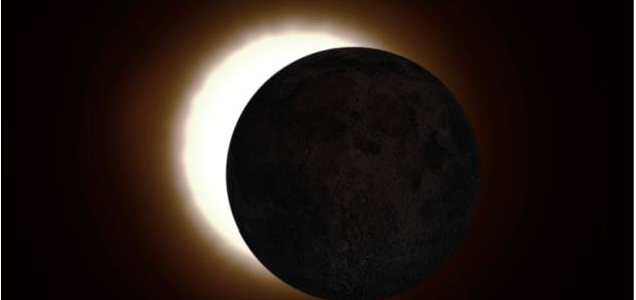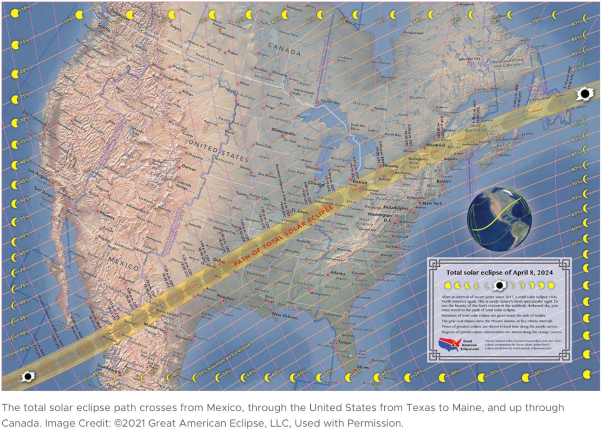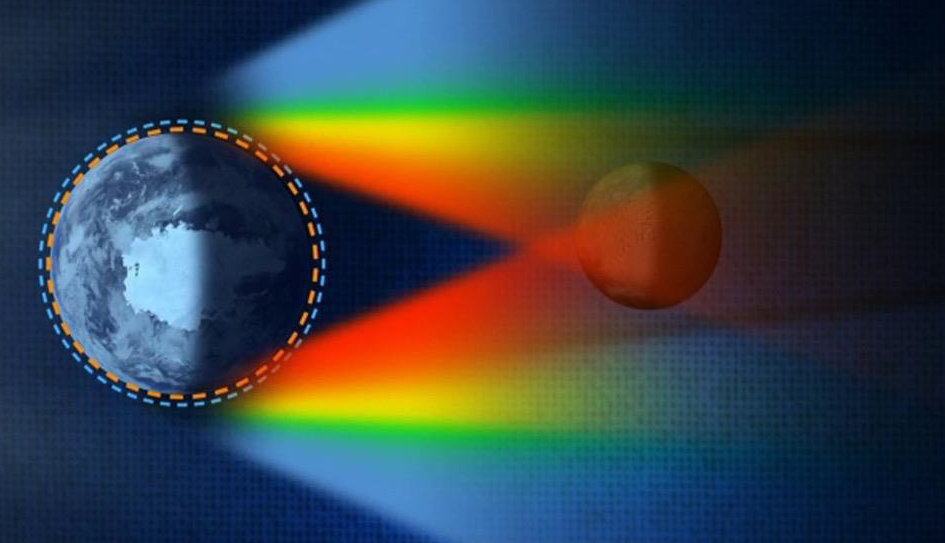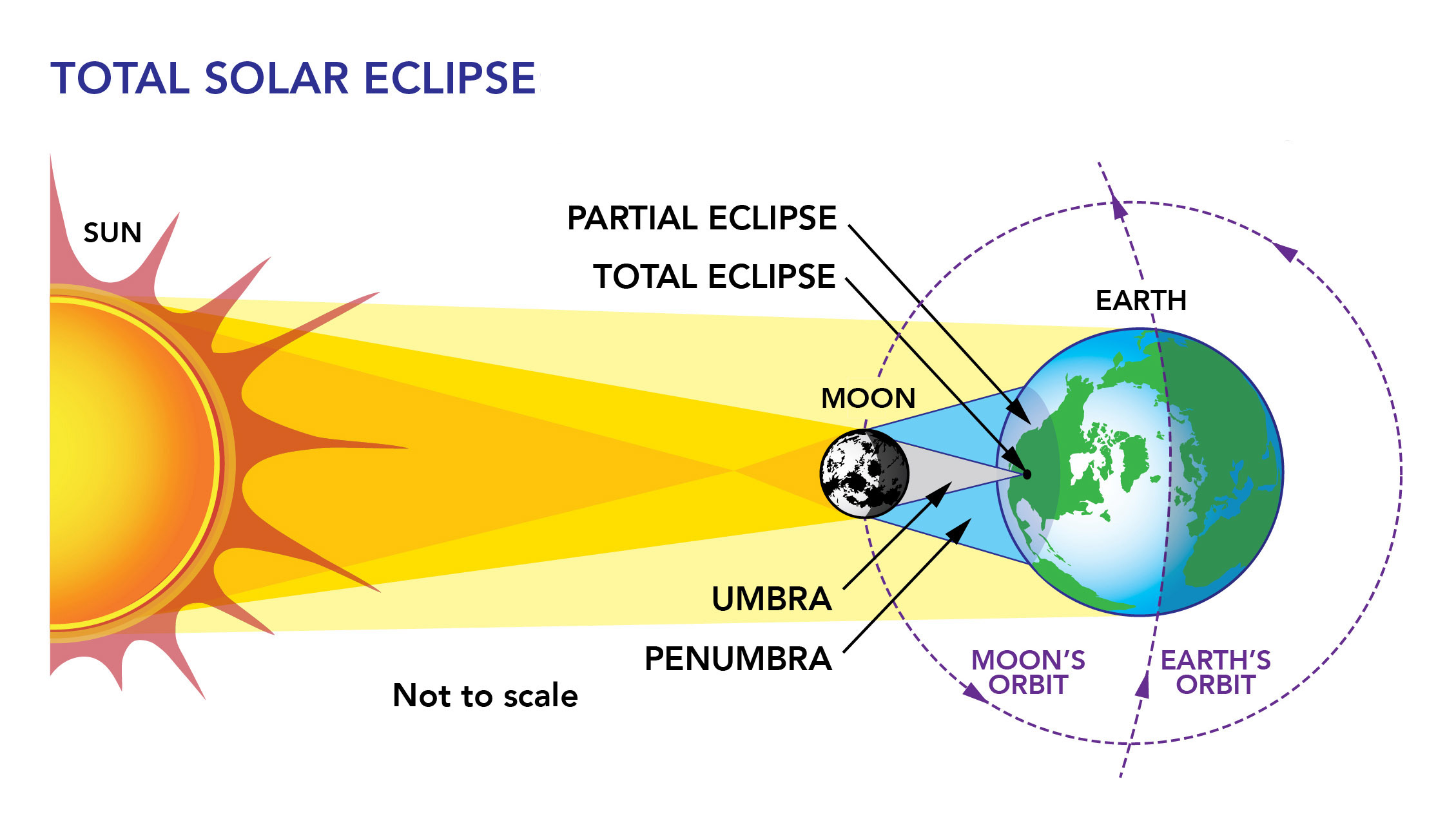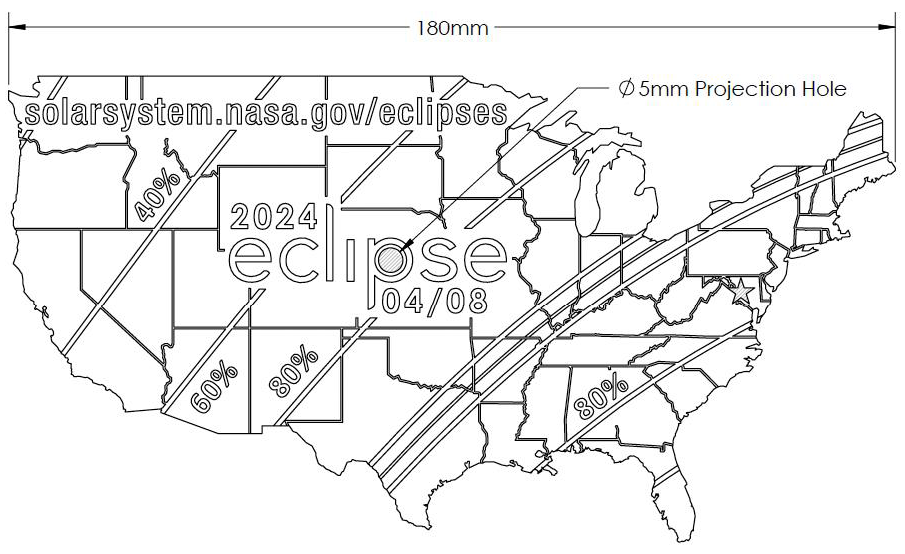Mini Lesson/Activity
What is the Sun's Corona?
Overview
In this activity students will compare different methods for observing the Sun’s corona and make predictions about what they will observe during the April 8, 2024 total solar eclipse.
Student Directions
Remember to never look directly at the Sun without proper safety equipment.
Materials:
- dark paper
- white chalk
- circle template
- Optional What is the Sun's Corona Student Sheets in Google Docs OR PDF.
Introduction:
The Sun’s corona is the outermost part of the Sun’s atmosphere. Just like Earth’s atmosphere, it is made of a jacket of gases. Scientists are interested in viewing the Sun’s corona because Earth resides within the solar atmosphere and experiences something called space weather, which can interfere with technology on Earth. Heat and energy are transferred from the Sun, into the corona, and out into the solar system as solar wind, the constant stream of particles flowing from the Sun in all directions. The corona is usually hidden by the bright light of the Sun's surface, which makes it difficult to see without using special instruments. However, the corona can be viewed only during totality with the naked eye during a total solar eclipse.
Scientists use total solar eclipses as a unique opportunity to view and study the corona.
Steps:
- Background Knowledge: Long before there were cameras or telescopes, early scientists recorded what they saw in the sky in words, carvings, drawings, and paintings. While early observations of the night sky made valuable contributions to scientific discoveries, modern, advanced NASA equipment provides even more data about the Sun and the solar system.
- Analyze Images: Compare the images of the Sun below. For each image, describe what you see.
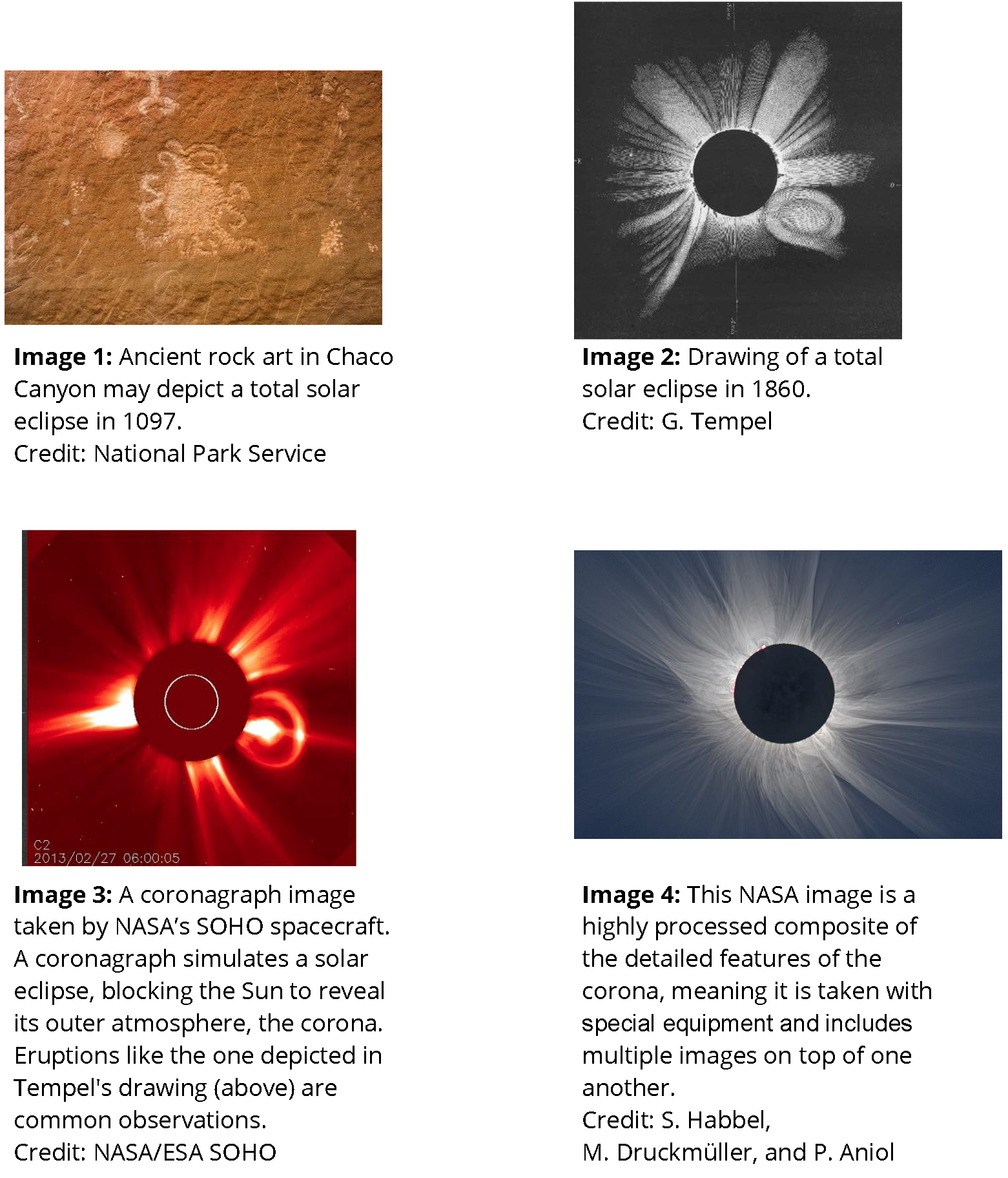
- What are the similarities and differences between the features in the Sun’s corona across the images?
- Add your observations to Data Table 1.
-
Label: Some features of the Sun’s corona are only seen using special cameras and filters. Image 4 is a composite image, and not what you would see with your naked eye during a total solar eclipse. Examine the same image, in Figure 1, showing some of the coronal features that can be observed using special equipment.1).
Image 5, below, is a more realistic depiction of what you would typically see during a total solar eclipse, at the moments of totality, with the naked eye. Remember that you need to use a solar filter, like solar eclipse glasses, to view the partial stages of the eclipse.

-
Which features of the corona, labeled in figure 1, do you see in the image of a total solar eclipse (Image 5)? Label the image with features of the corona.
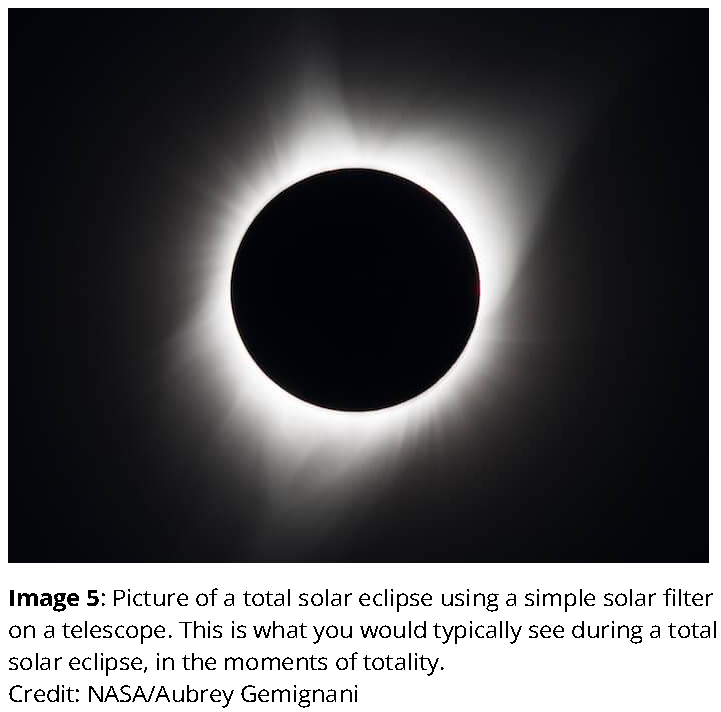
https://mynasadata.larc.nasa.gov/sites/default/files/inline-images/totality_1.png
-
-
Predict: Notice the coronal loops depicted in the carving from Chaco Canyon in 1097 (Image 1) and the drawing from 1860 (Image 2).
Solar features, like coronal loops, would be visible with the naked eye, if the total solar eclipse occurred during a period in the solar cycle called solar maximum.
The solar cycle is approximately 11 years, which occurs when the Sun’s magnetic poles switch. During solar maximum, the Sun is more active, producing solar eruptions that can be seen as loops and streamers in the corona. Scientists have been monitoring the solar cycle since the 1700’s and the next solar maximum is predicted for 2025. This means that features like coronal loops and helmet streamers may be visible during the April 8, 2024 total solar eclipse.
-
Create a drawing for your prediction for what you may see during the April 8, 2024 total solar eclipse.

Steps for Creating a Corona Drawing, Credit: NASA GSFC/M.P. Hrybyk-Keith - Step 1: Trace and cut a large circle template on stiff paper, like cardstock.
- Step 2: Place the template on dark paper and hold or tape it down. Draw a thick circle or lines of chalk around the template a few times.
- Step 3: Holding the template in place, smudge the chalk away from the center of the circle using a finger to create the corona of the Sun.
- Step 4: When you are done smudging the chalk, remove the template and label the coronal features that you may expect to see during the April 8, 2024 total solar eclipse.
- Save your prediction and compare it to your observations during the April 8, 2024 total solar eclipse across the US!
-
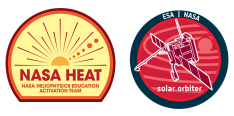
Sources:
- Gallery Item Display. (n.d.). Gallery Item Display. Retrieved April 3, 2023, from https://www.nps.gov/media/photo/gallery-item.htm?id=9DAC8A9C-155D-451F-679EECBB4AC5B970&gid=9DAC8A43-155D-451F-673D9AF1E702DBF9
- Coronal Mass Ejections | Total Solar Eclipse 2017. (n.d.). NASA Eclipse 2017. Retrieved April 3, 2023, from https://eclipse2017.nasa.gov/coronal-mass-ejections
- NASA/ESA SOHO. (n.d.).
- Total Solar Eclipse 2017. (n.d.). Solar Eclipse. Retrieved April 3, 2023, from https://eclipse2017.nasa.gov/total-solar-eclipse
- Thomas, V. (2023, March 8). New NASA Map Details 2023 and 2024 Solar Eclipses in the US. NASA. Retrieved April 3, 2023, from https://www.nasa.gov/feature/goddard/2023/sun/new-nasa-map-details-2023-and-2024-solar-eclipses-in-the-us
- Eclipses Home | Eclipses – NASA Solar System Exploration. (n.d.). NASA Solar System Exploration. Retrieved April 3, 2023, from https://solarsystem.nasa.gov/eclipses/home/
- Shannon Reed/NASA HEAT. (n.d.).
- NASA GSFC/M.P. Hrybyk-Keith. (n.d.).
Teacher Note
Teachers, these mini lessons/student activities are perfect "warm up" tasks that can be used as a hook, bell ringer, exit slip, etc. They take less than a class period to complete. Learn more on the "My NASA Data What are Mini Lessons?" page.
Teachers who are interested in receiving the answer key, please complete the Teacher Key Request and Verification Form. We verify that requestors are teachers prior to sending access to the answer keys as we’ve had many students try to pass as teachers to gain access.
Disciplinary Core Ideas:
- ESS1B: Earth and the Solar System
Crosscutting Concepts:
- Cause and Effect
Science and Engineering Practices:
- Developing and Using Models

